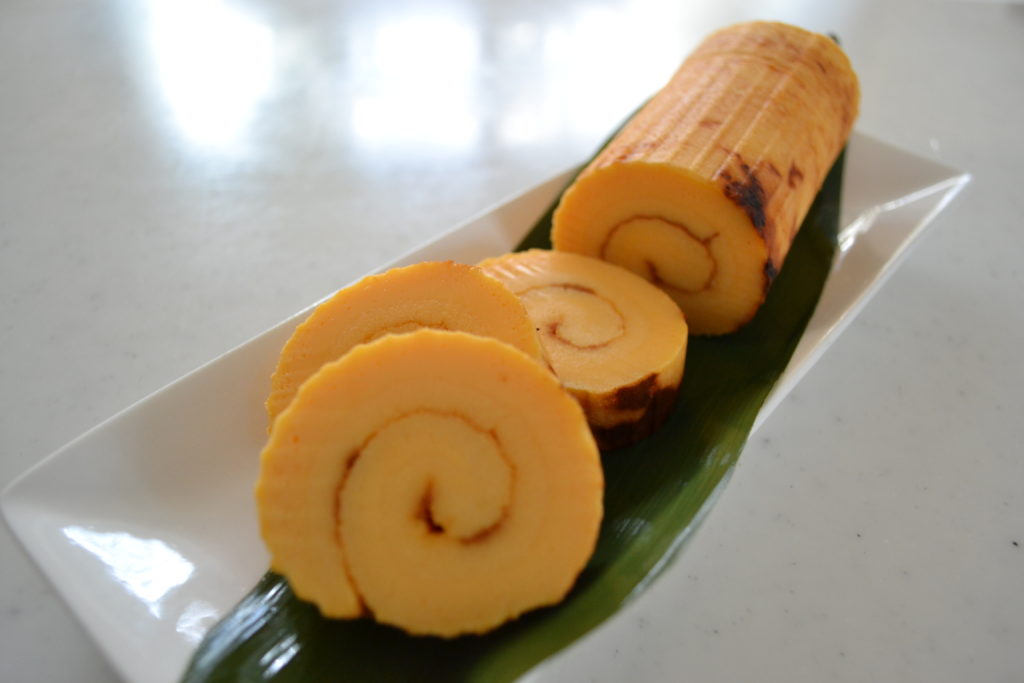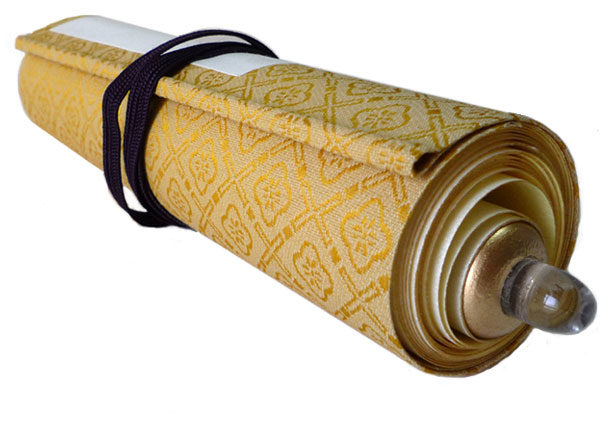OSECHI RYORI | Traditional Japanese New Year Food おせち料理 (EP254)

Today I want to share with you OSECHI RYORI, Japanese traditional new year dishes.
Each one of these dishes has meanings and symbolizes important things in our lives.
We prepare Osechi Ryori for a wish for good luck for the coming year.
Let’s start with the Datemaki Sweet rolled omelet.

DATEMAKI
DATEMAKI represents knowledge because it looks like an important ancient document rolled paper and sometimes hidden from the world.

If you want to be smart, this is the food for you.
We add a lot of sugar for the recipe, but it’s only a half amount of common recipe.
Oddly, I don’t like a sweet omelet but, this is an exception
Sugar used to be a precious and luxurious ingredient, so it was appreciated when it was invented. Our ancestors wanted to make OSECHI RYORI rich as much as they can.
ingredients for 18 cm square pan
5 large eggs
40g Hanpen fish cake
2 1/2 tablespoons sugar
1/3 teaspoon salt
1/2 tablespoon light soy sauce
2/3 tablespoon Kuzu starch (or corn starch)
1/4 cup Dashi (60ml)
1) Dissolve Kuzu starch (or corn starch) in Dashi.
The starch is used as a stabilizer.
2) Crack five eggs in blender, add in all the other ingredients.
Blend well.
3) Heat your Tamagoyaki pan on medium heat and grease the inside well.
If you don’t have a square pan, use cake tin or round pan instead.
Drop a egg mixture to make sure the pan is hot enough.
Pour in all the egg mixture and cook a couple minutes until the outside is just cooked.
4) Carefully transfer to a baking tray and cook in the oven for 10 minutes at 180°C (356℉).
Cook until the surface is golden brown and when you touch the center, and it bounces back it’s done.
5) Take it out onto the sushi mat and flip it over. ( The upside face to you.)
Score the surface about 5 mm depth.
Gentry roll the omelet up with the mat in.
Let it is sit 10 minutes.
6) Unroll the omelet, and then roll it up again tightly.
Secure with the rubber band and let it cool to room temperature.
7) Cut into 1 cm slice, and plate.

GOMA MANASU
Next, let’s make
Goma Namasu, vinegared Daikon, and carrot.
Red and white represent the celebration and peace in our culture, so this is an indispensable dish in OSECHI.
ingredients
1 large dried shiitake mushroom (10~15g)※rehydrate
1/3 pieces Aburaage (20g)
1/4 cup water (used for rehydrate) / 1 teaspoon soy sauce / 1 teaspoon sugar
20g carrot
200g Daikon
2 tablespoon sesame seeds
1 tablespoon sesame paste
1 tablespoon rice vinegar
1 tablespoon sugar
1/2 teaspoon light soy sauce
1) Soak dried shiitake mushroom in the water for at least one hour to overnight. Slice into thin strips.
2) Cut open the Aburaage into two. Cut into thin strips.
3) Put the Shiitake and Aburaage into the pot. Add in sugar and soy sauce and the water to rehydrate.
Cook on medium heat until almost all of the liquid is gone for several minutes, covered.
4) Thinly slice carrot, and cut into thin strips. Cut daikon as well.
Sprinkle 1/3 teaspoon of salt into the daikon and a pinch of salt for the carrot. Toss and let it soften.
5) sesame dressing.
Heat a pan on low and add in white sesame seed.
Toast until fragrant for about a couple of minutes or until pop up.
Transfer to a mortar, and grind until half has done.
If you don’t have a grinder, put sesame between a paper towel and cut with your knife.
Or just replace it with sesame paste.
6) Add in sesame paste, sugar, rice vinegar, and light sauce.
Mix until well combined.
7) Add in cooked shitake mushroom and Aburaage squeezed carrot and Daikon. Mix until well combined.

TAZDUNA KONJAC
Next let’s make Tazuna konnyaku.
Tadzuna represents a rein for horse, and that means we can control our mind to go for the target.
And it represents a knot which means having a good relationship with a partner as well.
ingredients
1 konjac
1/2 cup (120ml) Dashi
1/2 tablespoon soy sauce
1/2 tablespoon Mirin
1 teaspoon sugar
1) Slice konjac into 5 mm slices and cut a slit in the center about 2 cm and flip it over from the slit.
2) Put it in the pot and cover with the water and bring it to a boil discard the water. Preboiling make konjac soft and easy to soak up dashi.
3) Add in Dashi, soy sauce, Mirin and sugar.
Cook about 15 minutes or until almost all of the liquid is gone. Set aside.

SHRIMP UMANI
Shrimp represents longevity.
The shape symbolizes the older generation whose back is bowed with the hard work at the rice paddy.
We admire them for developing society so we all want to be
like that.
ingredients
4 shrimp
2 tablespoon Sake
1 tablespoon Mirin
1 tablespoon soy sauce
1 teaspoon sugar
2 slices ginger
1) Cut off the tips of the shrimps.
2) Put sake, Mirin, soy sauce, sugar, and two slices of ginger and bring it to a boil.
3) Put in your prepared shrimp, cover, and cook for three minutes.
4) Flip it over and cook for one minute and turn the heat off and cook in the remaining heat.

KURI KINTON
The last one is easy Kuri Kinton mashed sweet potato.
Usually, we mixed the mashed sweet potato with chestnut, but I don’t have it so I made it with the sweet potato only.
The color is golden so it represents gold.
So it represents financial prosperity.
ingredient
1 small baked sweet potato (That’s it!)
Peel the baked sweet potato and mash it. Shape into a small ball, and that’s it!
Other Dishes
I want to prepare eight dishes.
Eight means “expanding luck” in our culture, so I added 2 dishes to make my Osechi consists of 8 dishes.
PORK CHASHU
YELLOW TAIL MISO DZUKE
KUROMAME
100g Kuromame (Japanese black beans)
80g sugar
a pinch of salt
All the Osechi for 2021 is done!
I used to spend a whole day to make much more Osechi.
But now, I make dishes that our family really like.
It took two hours to make all the dishes.
And I hope you will give this recipe, one or a try!
